Manitoba Insect and Disease Update: June 17, 2014
Compiled by:
- John Gavloski, Entomologist
Manitoba Agriculture, Food and Rural Development
Phone: (204) 745-5668
Fax: (204) 745-5690. - Vikram Bisht, Plant Pathologist
Manitoba Agriculture, Food and Rural Development
Phone: (204) 745-0260
Fax: (204) 745-5690
To report observations on insects or plant pathogens that may be of interest or importance to farmers and agronomists in Manitoba, please send messages to the above contact address.
To be placed on an E-mail list so you will be notified immediately when new Manitoba Insect and Disease Updates are posted, please contact John Gavloski at the address or numbers listed above.
To be placed on an E-mail list so you will be notified immediately when new Manitoba Insect and Disease Updates are posted, please contact John Gavloski at the address or numbers listed above.
Summary
Cutworms continue to be an issue in some areas. Flea beetle populations remain a concern in some areas, although the cool weather and advance of many canola fields to stages more tolerant to feeding has resulted in decreased damage. Grasshoppers are emerging, but generally still in the first and second instar stages. Alfalfa weevil larvae are starting to be noticed in some alfalfa fields.
Brown spot (Septoria) and bacterial leaf blight have been observed in soybeans, and rust has been found in some fields of sunflowers.
Current Insect and Disease Scouting Priorities
Insects: Cutworms, flea beetles and diamondback moth in canola, grasshopper emergence in overwintering sites, alfalfa weevil in alfalfa.
Plant Pathogens: Seedling diseases in various crops, blackleg on canola, soybean brown spot and bacterial blight, and sunflower rust.
Brown Spot and Bacterial Blight in Soybeans
Brown spot disease (Septoria) has been observed in young soybean plants in a field with soybean following soybean (Fig 1). Also, in the same field early spots of bacterial leaf blight have been observed. As the name suggests, brown spots are “brown” and in the early stages there is no yellowing around them. Bacterial blight spots have a yellow halo in the early stages (Fig 1 & 2), and in later stages the halo has a dark brown necrotic center (Fig 3, 4).
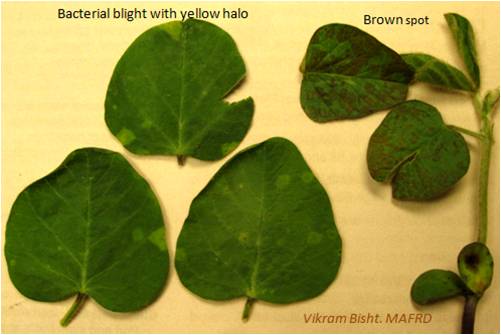
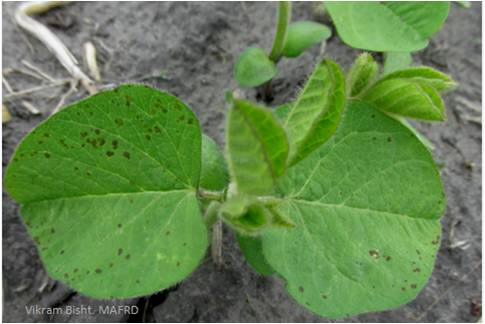
Fig. 1. Early stage of bacterial blight spots and brown Fig. 2. Brown spot on unifoliate leaves.
spot disease on unifoliate leaves of soybean


Fig 3. Early stage Bacterial blight Fig 4. Later stage showing necrotic center with halo
Rust on Sunflowers
Rust spots have been reported in some fields. Early season infection usually suggests overwintering of inoculum locally, either in infected crop residue of crop or wild plants. The spots are orange-brown initially and turn dark brown / black with maturity (Fig 5). Under favourable conditions of high humidity and dew on leaves, secondary infection spread the disease. It is time to scout for early infections of the rust fungus.
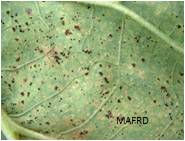
Fig.5. Rust spots on sunflower leaf
Grasshoppers
The hatch of our grasshopper species of possible economical concern is continuing. Most are in the first or second (out of 5) juvenile growth stages. The map below demonstrates the percent hatch of our crop feeding species of grasshoppers in western Canada.
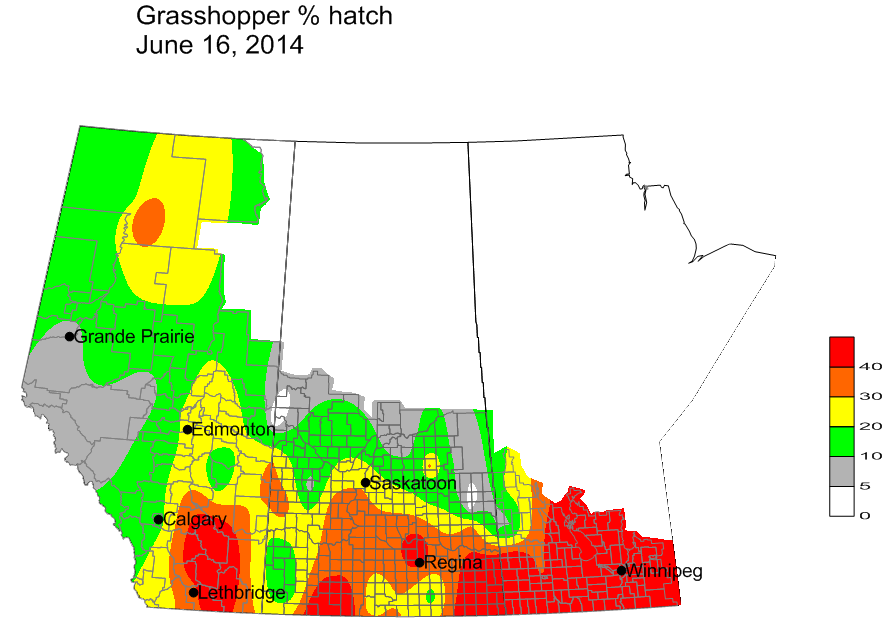
Fig. 6. Percent hatch of grasshopper eggs for potentially economic species in Western Canada.
Although number are increasing along many field edges and ditches, it is still early to be thinking of controlling these populations in most instances. There are likely more eggs yet to hatch, and the grasshoppers are too small to be moving too far. At this point farmers and agronomists should be scouting the major overwintering sites (areas that would have had lush vegetation late last summer) and determining what the levels are like. Note that newly hatched grasshoppers are not much better than a grain of wheat. Also, be careful not to confuse small grasshoppers for some of our larger leafhoppers when scouting field edges and roadside ditches. There are many non-economical species of leafhoppers that are in the vegetation along field edges, and these will also hop when disturbed. So don't count these as grasshoppers.
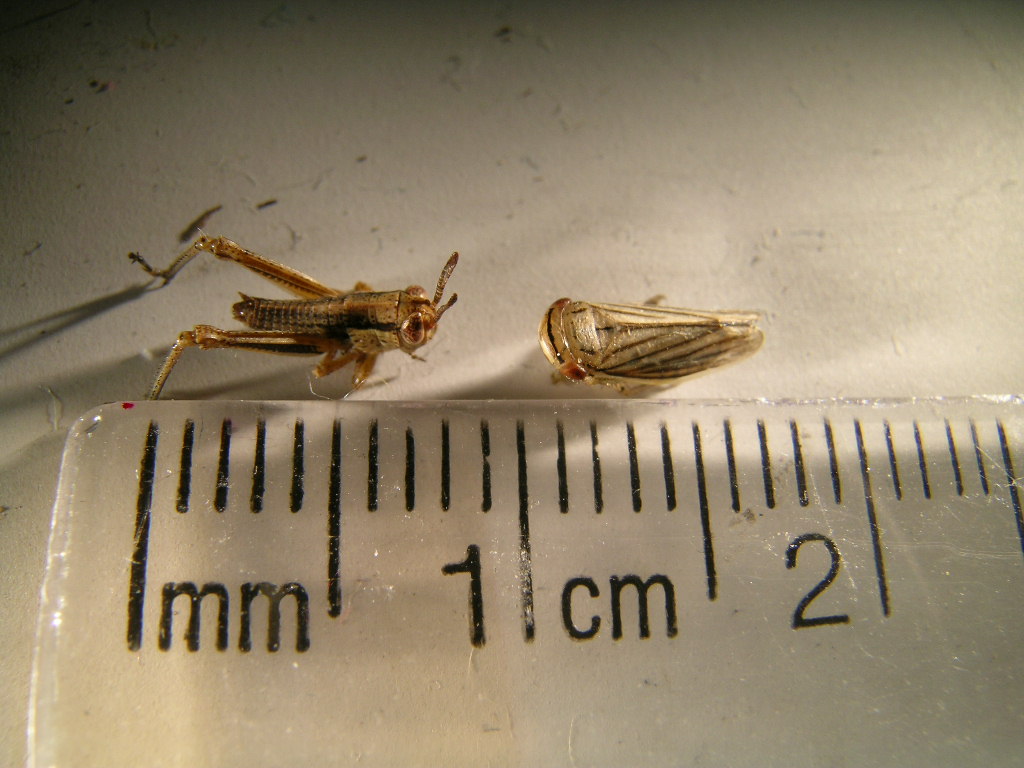
Fig. 7. Juvenile grasshopper (left) and non-economical species of leafhopper (right).
Regarding leafhoppers, we have not yet seen aster leafhopper (one of our 2 leafhopper species that can be a pest of field crops in Manitoba) while sweeping crops, and there have been no reports yet of aster leafhopper in Manitoba. So the risk of aster leafhoppers being an issue in field crops this year is low, although vegetable growers should continue to monitor for aster leafhopper.
Purple Leaves in Corn
In some fields, purpling of leaves on young seedling are being noticed (Fig 1). This could be an indication of P deficiency. This may be caused by a number of factors, including low P in soils, insufficient P fertilizers available to the plants, root injury due to various factors including cold, compact or wet soils, In some cases corn following canola may cause purple leaves too – this results from reduced levels of mycorrhizae populations following canola; mycorrhizae on roots helps uptake of P into the plants. ( http://cropchatter.com/why-is-my-corn-purple/ ).
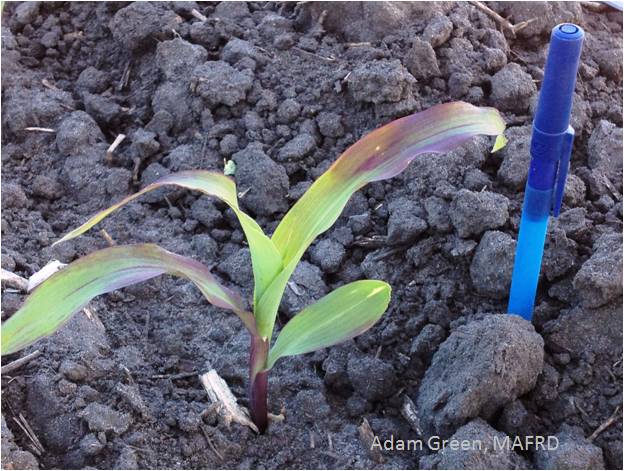
Fig. 8. Purple leaf on young corn seedlings in field following canola.
Insect Monitoring Programs
Diamondback Moth: Some moderate levels of diamondback moth have been recorded in traps in the Eastern, Central and Northwest regions. Larvae are just starting to be noticed, however so far just at low levels. So when scouting canola fields, look for larvae of diamondback moth, but it is still too early to know if the moths that have arrived will amount to any feeding that could be economical.
Highest trap counts, as of June 17th are: St. Adolphe (177), Stead (154), Morris (143 and 101), Elm Creek (133), and Teulon (100).
Weekly maps for the monitoring program for diamondback moth can be found at: http://www.gov.mb.ca/agriculture/crops/insects/diamondback-moth-monitoring.html
